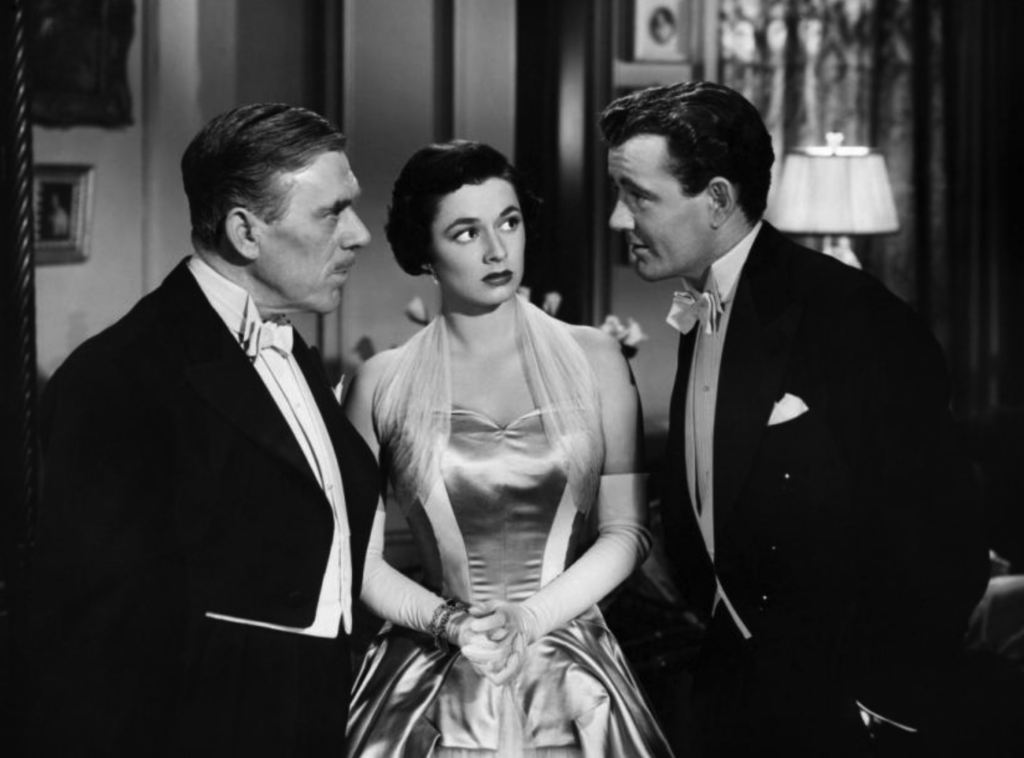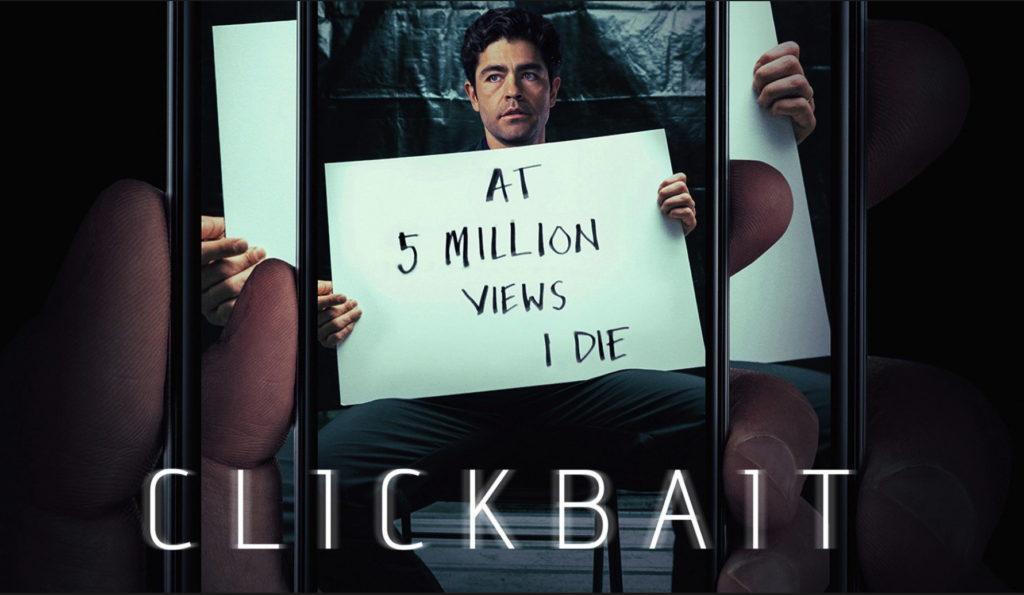

Plot twists are very common in all forms of fiction from a short story (The Lottery) to novels (Gone Girl) to the screen (Vanilla Sky). Mysteries, by their very nature, demand the author understand plot twists and be able to use them well. The ‘kissing cousin’ genres—thriller, suspense, horror, and their many iterations—also rely heavily on the author’s ability to keep readers guessing.
Commercial fiction aside, most genres can benefit as well.
Plot twists are helpful for many reasons, though obviously we can’t cover them all today. We are a media-saturated world. As we talked about in my last post, we are a culture addicted to binging.
Humans have always had a propensity for gluttony. But, for the first time in our history, we finally have access to enough content to keep us mainlining story after story until we’re practically hungover.
This is great news, good news and bad news for storytellers. The great news is that storytellers are in high demand, and the higher one’s skill level, the better the payoff. Good news is people are consuming content in a wide variety of mediums from serial podcasts, to small screen series, to novels, to movies and on and on.
What’s the bad news, then? The bad news is that, because of this entertainment paradigm shift, audiences are far more discerning and savvy than ever. The ‘sacred knowledge’ only oracles (storytellers) once noticed and understood has flown the coop.
Audiences consume so many stories that they’re more attuned to any story that’s ‘formulaic’ to the point of predictability.
Plot Twists of Old


In the pre-digital era of stories, audiences could only binge so much. I remember the 90s when my entire family was addicted to the Tony Hillerman mysteries. We’d pre-order the hard-back then fight over who got to read first, then heckle each other for taking too long.
But we could only get a Hillerman book about ONCE a YEAR. Sometimes longer.
Until about ten years ago, the small screen was mostly soap operas, daytime shows, network sit-coms and television dramas. Until Amazon Prime, Netflix, and the like, we had to wait a week between episodes. I once landed at DFW airport on time…only the plane had no gate open and we were forced to sit on the tarmac. We nearly had a riot on the plane because people didn’t want to miss the season finale of 24.
Seriously.
Suffice to say, with a week or more (or even months between new seasons) to cool off and forget details, audiences could only recognize/retain so much. Now that I’ve spent MONTHS binging NCIS, I see a WHOLE NEW show, simply because I now have the luxury of watching episodes back to back.
New-and-Improved Media


In the modern era, this ability to inhale content as fast as we want to has made audiences hungrier (YAY!). While this is great, the overwhelming exposure to story has also made it far tougher to keep audiences engaged. We have ‘new-and-improved’ writer problems. They are essentially the same problems, just taken up a few hundred-thousand notches.
It’s always been a challenge to hook an audience. But, these days, we have a far shorter amount of time. People have the attention span of a meth-addicted ferret with severe ADHD. They also have a gazillion other options if we fail to hook early and hook DEEP.
When we understand the fundamental changes in our audience, it then becomes clear why plot twists can offer major advantage.


For anyone who’s actually finished a novel or screenplay, you understand how the ‘sagging middle’ is an ever-present problem. When it comes to plot structure, most stories are three-act Aristotelian structure. The first act (beginning) and third act (resolution) are relatively short. The second act (all that connects in-between) is the longest act. Being the longest, it’s also the easiest place to bore and lose people.
Plot twists are a way of ‘shaking things up’ with the unexpected to keep the audience engaged. Also, since people have inhaled so much media (books, series, movies, serial podcasts, etc.) they’re much better at predicting the plot points and guessing the ending.
When we deploy savage plot twists, we keep audiences on their toes. We can also deliver an ending they never saw coming (but, in retrospect, should have). That is KEY, and we’ll talk more on that in a bit.
So what are common types of plot twists?


In the interest of time, today, we’ll discuss these four:
The Sleeper Agent
The Red Herring
The Sudden Detour
The Unreliable Narrator
As I mentioned earlier, some genres hinge on great plot twists (mystery). But even genres noted for being ‘formulaic’ can benefit as well. Romance is formulaic when it comes to structure.
Give me a minute before shouting me down.
If we watch/read a romance, we KNOW that two separate people initially at odds WILL EVENTUALLY come together and there will be an HEA (Happily Ever After) or the more modern HFN (Happily for Now) at the end.
If the couple does not end up together at the end, it is NOT a romance. It might be general fiction or women’s fiction but, by definition, it is NOT a romance. Just because our audience will KNOW the couple will end up together, however, doesn’t mean they should be able to predict precisely HOW.
Do romance authors need to use plot twists? Not to the same degree as other genres. But they are a great literary device to help your work stand apart.
Moving onto types of plot twists.
Sleeper Agent Plot Twists


This is our Judas Iscariot. An ally close to the protagonist turns out to either be working for the opposition or is, in truth, the ‘bad guy.’ The sleeper agent can be used to throw off the protagonist and ratchet the tension should it start to sag or lean toward becoming predictable in Act Two.
The protagonist is learning, growing, cooking and booking to solving the core story problem…then comes the sucker punch that sends him/her reeling. Not only can this character create havoc, but their betrayal will rattle the main character because they no longer know who they can trust.
In this case, the sleeper agent is there to shake up the second act, but they are merely an extension of the core antagonist (Big Boss Troublemaker). Their purpose is to add misdirection and make it harder for the protagonist to succeed.
The second way we can use the sleeper agent, as I mentioned above, is to activate them at the end. All along the protagonist relies on a certain character as an ally, only to realize they’ve been misled/used/betrayed. The movie Minority Report, is superlative example of this. The movie is loosely based off the 1956 novella by iconic sci-fi author Philip K. Dick.
Plot Twist EXAMPLE:


Chief John Anderton is head of a unique crime-fighting division known as pre-crime, where (presumably) murderers can be stopped and arrested before ever committing the actual crime.
John’s mentor and father figure, Lamar Burgess, wants to take pre-crime national and plays on John’s loyalty and emotions. When the Feds send in Danny Witwer to look for flaws, Burgess immediately pits John against the federal agent.
Thus, when John finds himself on the run, accused of murdering a man he’s never met, Burgess fuels John’s suspicion and paranoia that SURELY Danny Witwer is behind it. Witwer wants to take down pre-crime and what better way than ruining John’s name?
In the end, we realize Burgess has been using John all along. He doesn’t want to retire, especially now that pre-crime is going national. Additionally, he has to cover up crimes he committed in the early days and John is the perfect patsy. In Act Three, John has to take down the man he loved like a father who was happy to let him rot in prison.
Red Herring Plot Twists


Y’all have all probably heard the term ‘red herring,’ but do you know where/how the term originated? The controversial journalist, pamphleteer, and politician, William Cobbett popularized the term when he relayed a story about how dog trainers would use a smoked strong-smelling fish to mislead hounds into following false trails. Over time, the hounds learned to better distinguish the false trails from the real deal.
If one writes mystery (or similar genres) red herrings should abound. Done well, the audience might believe EVERYONE ‘did it’ before the big reveal. False trails should be, first and foremost, believable. Red herrings can be tricky, though. First, use too few and readers will easily find their way back to the proper trail. Use too many? The audience becomes lost, confused or frustrated.
Red herrings must all be introduced as red herrings by around the 3/4 mark of Act Two. Since we’ve probably all read great books or seen great movies with red herrings done well, I’ll take a different tack. What happens when they’re done poorly?
Example of Botched Plot Twist:


Last night, we finished a new limited Netflix series called Clickbait. This series did SO many things brilliantly that I might post on it another time. The only criticism I have (and I won’t spoil it completely) is there was NO POSSIBLE WAY for the audience to figure out the ‘whodunnit?’
A crime takes place in the beginning (standard for mystery-suspense). Each episode follows a different character, many who either have a motive to commit the crime or they at least help solidify suspicion toward another character (red herrings),
I’ll tell you ahead of time that Clickbait seriously is worth watching for so many reasons. But…
Though the writers did a fabulous job with conflict, drama, character, and even red herrings, the ending smacked of an M. Night Shyamalan GOTCHA!
Granted, once the final episode reveals what actually happened and why, we see how it was a reasonable ending. It worked, but fizzled.
What irritated me was that, is even though the guilty party was introduced early on (a prerequisite), this character was presented as a mere fluff background character. In my POV, there was NO POSSIBLE WAY the audience could cull through the misinformation and figure out the WHO (the real culprit) or even the WHY (motivation).
On that? I call, “FOUL!”
The movie Horsemen pulled similar nonsense, only worse. I talk about it HERE. Again, Clickbait is TOTALLY worth watching, whereas Horsemen was two hours of my life I can never get back.
Sudden Detour Plot Twists


This is when we lead the audience to believe the protagonist has resolved the conflict, only to swerve hard left and reveal a totally new and unforeseen conflict in need of resolution.
We’ve all been there. The good guy seems to have won, but there’s still 20 minutes left in the movie or 30 pages left in the book. Often this plot twist works in tandem with the plot point we commonly refer to as ‘The False Victory.’ All stories should have this plot point because the next point ‘The Darkest Moment’ comes right as the protagonist morphs from main character to HERO.
This doesn’t imply that there is ALWAYS a plot twist, though. Often, the MC has a character flaw that has yet to be fully recognized and addressed. They’ve not grown enough to realize they need a team, they’re prideful, they have to forgive, whatever. If the MC fails to change, then they cannot ‘win.’
The sudden detour plot twist is different. The MC frequently HAS changed and DOES have a victory…only it is either incomplete or misguided.
Example of Plot Twist:


The iconic horror movie The Ring executed this sort of plot twist very well. When teenagers start dying mysteriously exactly seven days after watching a strange VHS tape, investigative journalist Rachel Keller is on the job. She has a personal reason to get involved. Her perfectly healthy niece was a victim.
She’s skeptical, but once she finds the tape, watches it and receives the same eerie death threat, “Seven daaaaays,” by phone, she has to figure out the mystery to save her own life. Instincts tell her there are clues in the video that are key to breaking the curse.
She’s partly correct.
Her sleuthing pays off. Rachel discovers one CAN break the curse if you convince another person to watch the tape, thus taking the curse onto themselves. But that’s more than a bit cold-hearted. She feels there HAS to be a better answer.
She also uncovers the identity of the girl from the video and what really happened…BUT she gets it wrong.
Despite warnings from those who knew the child (Samara) and claim the child was evil, kind-hearted Rachel refuses to believe it. She follows the clues, locates the well, and discovers Samara’s remains. She also finally understands the ‘seven days’ reference. It’s how long it took for Samara to drown after her adoptive mother pushed her into the well.
Rachel BELIEVES once she uncovers the truth and brings justice to the murdered Samara that the curse will end.
NOPE.
Samara is not the innocent victim Rachel believed her to be. Unless she figures out and complies with what the vengeful spirit wants (making more copies of the tape and spreading the curse), Rachel and her son are dead.
Unreliable Narrator Plot Twists


Writers are devious, and excellent writers are borderline psychopaths. Don’t believe me? Check out my post, 13 Reasons Writers are Mistaken for Serial Killers.
Anyway…
The audience automatically trusts the main character/narrator of the book. It’s a lot like a baby duck imprinting upon the first animal/person it sees upon hatching. Once someone begins a story or starts watching a movie, they imprint on the MC and will, by default, assume the MC is ‘the good guy.’
We, writers, can use the audience’s blind trust to our advantage.
MUAH HA HA HA HA *coughs, sputters*
Moving on…
We weave a story with a perceived villain/threat that actually doesn’t exist, at least not in the way the audience believes. In Fight Club, we fully believe that the narrator’s frenemy, Tyler Durden, has betrayed the MC and gone completely psycho, dragging our beloved protagonist into his twisted plans.
This is all well and good except, we gloss over one tiny, but critical, detail.
In the book and the movie (both narrated in first-person), the narrator never TELLS US HIS NAME. By the end, we figure out the narrator and Tyler Durden are one-in-the-same.
The clues are there, though. This is what keeps us from screaming to the heavens at the end.
Early on, our protagonist seeks medical help for his crippling insomnia, but he’s brushed off. We notice his vision distorts, he’s losing gaps of time, and crazy girl Marla Singer keeps showing up dropping clue after clue that something is VERY wrong with our narrator friend.
What we come to realize is that the MC, at some point, suffered a psychotic break from lack of sleep, and his repressed alter ego (Id) manifested in real life. The MC very literally IS his own worst enemy,
Examples of Unreliable Narrator Plot Twists:


The unreliable narrator has many different forms. There is a person suffering from some form of a psychotic break, which I feel was done brilliantly in the movie Black Swan and Vanilla Sky.
Some might want to include The Sixth Sense as an excellent unreliable narrator, but I am hesitant there. It smacked too much of the newbie writer’s, “It was all a DREAM!” ending.
In my opinion, there weren’t strong enough clues for one to figure out we were possibly dealing with an unreliable narrator. We had NO way of knowing what the color red meant, only that it was odd. Granted, Shayamalan pulled this story off brilliantly, but he ultimately ended up a victim of his own success.
The misdirection he used in The Sixth Sense could only work well ONCE on a totally naive audience.
Also not that not all unreliable narrators are the same. Rachel Watson from The Girl on the Train is an alcoholic who drinks until she blacks out. She claims to be a key witness in a murder, but can she be trusted? Is she a witness, a victim or is she a delusional attention-seeker?
The movie, The Usual Suspects offers yet another flavor of unreliable narrator. The story takes advantage of inherent human biases. Who IS the infamous Keyser Söze? Well, just like the other examples I’ve given, there ARE strong clues. Those paying attention have the trail of breadcrumbs, but only if they stop to notice them.
In Conclusion
Plot twists are a fantastic literary device that can help bring on the BINGE! Writers who use this device well can turn audiences into acolytes.
But BE WARNED! The plot twist is a double-edged sword. As authors, we MUST understand plot structure and character well enough to to properly set up and deploy these twists and do all this WELL. In the hands of an amateur, plot twists smack of ‘trying to be clever.’ This can be a death sentence for a story, and audiences aren’t as prone to forgive in a world offering a gazillion other options.
I simply don’t have the time to cover HOW to execute these plot twists well, so we’ll leave it for another day or y’all can take advantage of my upcoming classes.
Like other literary devices, I strongly recommend doing a TON of studying, reading, get training, and practice, practice, practice.
Classes!
Sorry for the delay. Event Espresso took a couple days to get back to us and this was a known bug *great gnashing of teeth*. Apologies for any inconvenience, but I am offering an additional DISCOUNT for the log-lone classes, $10 off using Pitch10 and extending the deadline for the discount of Binge20, $20 off for the plotting class.
And, in the Bring on the Binge class, WE WILL DEFINITELY be discussing how to use misdirection and plot twists to keep your series fresh and make it highly addictive. I have ALSO added a new class The EDGE, another class where you can also learn more about plot twists.
Practice Your Pitch: Master the Log-Line 10/14/21
Register HERE and use Pitch10 for $10 off if register by 10/1/21
Bring on the Binge: How to Plot & Write a Series 9/30/21
Register HERE and use Binge 20 for $20 off until 9/21/21
The Edge: How to Write Mystery, Suspense & Thriller 10/21/21
Register HERE and use Thrill10 for $10 off if you register by 10/14/21
What are your thoughts?
Can you think of some great examples/types of plot twists I didn’t mention? What are some of your favorites? Are there any that fumbled so badly you would have tossed the story across the room but smart phones and flatscreen televisions are too expensive?
What made the plot twist sizzle or fizzle?
I LOVE hearing from you!
To prove it and show my love, for the month of SEPTEMBER, everyone who leaves a comment I will put your name in a hat. If you comment and link back to my blog on your blog, you get your name in the hat twice. What do you win? The unvarnished truth from yours truly. I will pick a winner once a month and it will be a critique of the first 20 pages of your novel, or your query letter, or your synopsis (5 pages or less).
